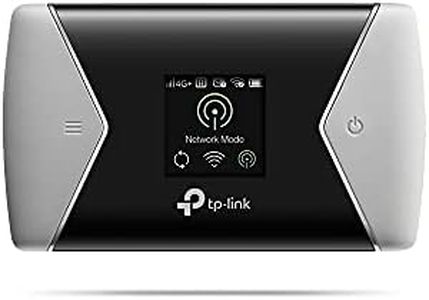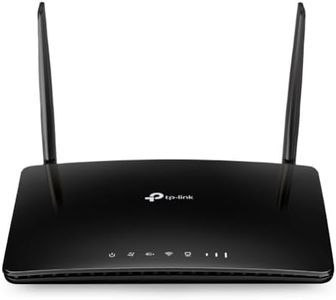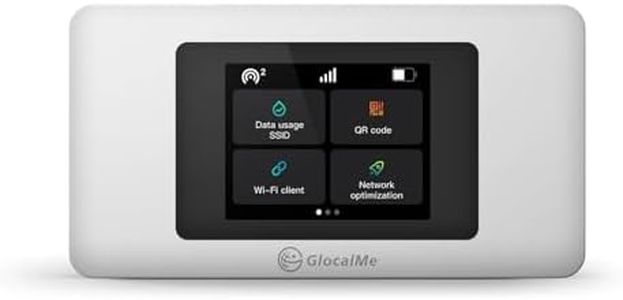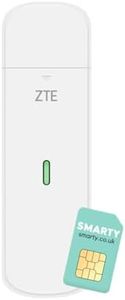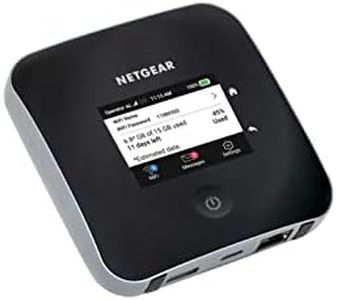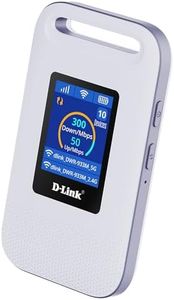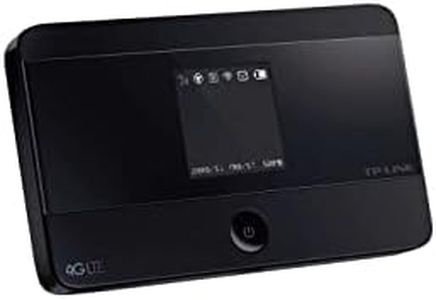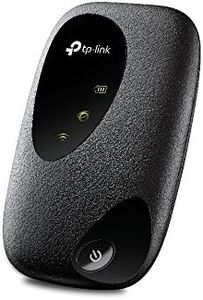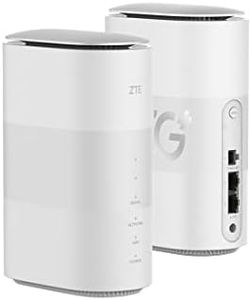We Use CookiesWe use cookies to enhance the security, performance,
functionality and for analytical and promotional activities. By continuing to browse this site you
are agreeing to our privacy policy
10 Best Mifi Devices
From leading brands and best sellers available on the web.Buying Guide for the Best Mifi Devices
A MiFi device, often called a mobile Wi-Fi hotspot, lets you connect multiple devices to the internet via a cellular network. It's ideal for people who need internet access on-the-go, away from traditional Wi-Fi sources. When choosing a MiFi device, it's essential to consider your usage habits—like how many devices you'll connect, how much data speed you need, and where you'll use it. Below are the key specs to understand, which will help you find the MiFi device that suits your needs best.Network Compatibility (4G, 5G, etc.)Network compatibility refers to the types of cellular networks the MiFi device can connect to, such as 3G, 4G, or 5G. The network type greatly impacts your internet speed and coverage. 3G is the most basic and common in older devices, offering modest speeds, suitable for email and basic browsing. 4G offers much faster speeds, good for streaming and working online. 5G offers the fastest speeds and lowest latency, ideal for heavy users or large groups, but is only available in select areas. To pick the right one, think about where you'll use the device—if you travel to rural areas, check for broad compatibility, but if you need top speeds in urban areas, consider a 5G-capable device.
Battery LifeBattery life determines how long you can use the MiFi device before needing to recharge it. Some devices run for just a few hours, while others last up to a full day or more. Shorter battery life works if you're only using the device for short trips or during commutes, while longer battery life is better if you need all-day connectivity, work remotely, or are often away from power outlets. Assess how long you'll need the device running without recharging, and pick a model that matches your typical usage time.
Number of Simultaneous ConnectionsThis spec tells you how many devices (like phones, laptops, and tablets) can be connected to your MiFi hotspot at the same time. Some MiFi devices handle just a few devices, making them great for solo travelers, while others support 10, 20, or even more connections, ideal for sharing with family or small teams. Consider how many people or devices you plan to connect regularly and look for a device that comfortably supports that number without slowing down.
Maximum Data SpeedMaximum data speed is how fast your MiFi device can download or upload data under ideal network conditions. Faster speeds mean smoother video streaming, quicker downloads, and better video calls, but remember that real-world speeds also depend on your network and location. Lower-speed devices may suffice for browsing and email, while higher speeds benefit heavy internet use, streaming, or sharing among many users. Think about what you’ll do online and choose a device with a speed rating to match.
Coverage Bands and Frequency SupportCoverage bands and frequency support indicate which specific network frequencies the MiFi device can use. The more bands it supports, the more likely it is to work in different regions or countries, and with various carriers. Basic devices may only work with one or two carriers, while more advanced models handle many international bands. If you travel or plan to use the MiFi internationally, make sure to choose a device with broad band support for reliable coverage.
Portability and SizeThe physical size and weight of a MiFi device affect how easy it is to carry it around. Smaller, lighter devices are easy to slip into a pocket or bag, while larger models might offer bigger batteries or more features but are less portable. Pick a device that balances portability with the features you need, especially if you’ll be traveling often.
Ease of Use and SetupHow easy it is to set up and operate the MiFi device can be important, especially if you aren’t tech-savvy. Some models have simple controls, screens, or even apps to manage your connection, while others may require more effort to set up. If you prefer hassle-free operation, look for a device that’s known for being user-friendly with clear instructions and intuitive controls.


